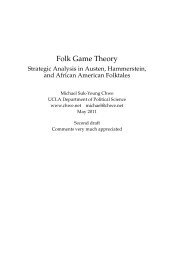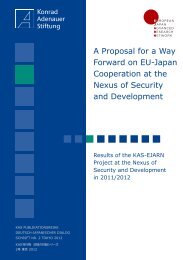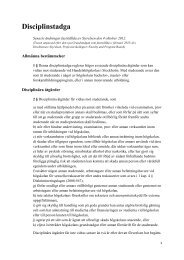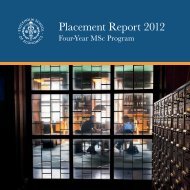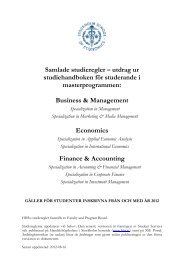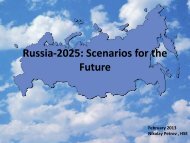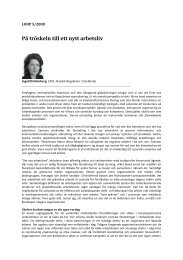Microfinance Banks and Household Access to Finance
Microfinance Banks and Household Access to Finance
Microfinance Banks and Household Access to Finance
- No tags were found...
Create successful ePaper yourself
Turn your PDF publications into a flip-book with our unique Google optimized e-Paper software.
etail bank is already present, ProCredit Bank was more likely <strong>to</strong> open a branch where incomelevels are lower. Together these effects suggest that the expansion of the ProCredit branchnetwork should have led <strong>to</strong> a disproportionate increase in the use of bank accounts amonglow-income households as compared <strong>to</strong> high-income households. We study the extent of thiscomposition effect in the next section.4.2. Composition effectTable 9 presents univariate results for the composition effect based on a difference-indifferenceanalysis. Replicating our analysis in Table 6 we compare the average change inaccount of household pairs for which a new ProCredit branch was opened between 2006 <strong>and</strong>2010 <strong>to</strong> those pairs for which a new ProCredit branch was not opened. We conduct thiscomparison again separately for household pairs which are close <strong>to</strong> a retail bank (Panel A)<strong>and</strong> households which are not close <strong>to</strong> a retail bank (Panel B). Within each panel we nowcompare the impact of new ProCredit branches for low-income <strong>and</strong> informal-incomehouseholds <strong>to</strong> the impact for high-income <strong>and</strong> formal-income households.[Table 9 here]The Table 9, Panel A results confirm that in regions where a retail bank is already presentnew microfinance bank branches are associated with a stronger increase in the use of bankaccounts among low-income households. The reported difference-in-difference estimatessuggest that a new ProCredit branch increases the use of bank accounts among low-incomehouseholds by 35 percentage points while the corresponding effect for high-incomehouseholds is only 17 percentage points. By contrast, there seems <strong>to</strong> be a much smallerdifference in the impact of new ProCredit branches on informal-income households (25percentage points) as opposed <strong>to</strong> formal-income households (20 percentage points).24




